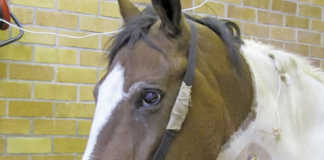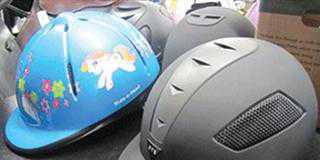All horses have worms to a greater or lesser extent. Younger and older animals, however, are more prone to serious infestation.The results can range from anaemia to death due to a ruptured bowl. Generally, poor condition is a sign of infestation. (Be warned, however, that even fat horses can have a worm problem.)
Signs of worm infestation include weight loss, a dull, hard coat, poor appetite, potbelly and pale mucous membranes on the eyelids and gums. Many horses rub their tails and suffer from reduced performance, diarrhoea, colic, and in the case of young foals, coughing. Yellow bot flies appear on the animals’ legs.
Prevention: always better
The most effective way to treat worm infestation is prevention. Worms and their eggs can be found wherever manure is deposited, so avoid feeding horses off the ground. Use feed bins, water troughs, hayracks and feeding mangers. Do not let water troughs overflow when you fill them, because worm eggs and larvae thrive in moist, muddy areas. Empty water buckets in flower beds or on grass lawns every day. Good drainage is essential to prevent muddy paddocks.
Every day, have someone pick up the droppings in the paddock and place them on a muckheap. If you live on a farm and this is impractical, slash the grass regularly to expose the manure to the sun, as this kill the worms. Rotate horse paddocks on a three-month cycle. Never overcrowd a field – horses tend to pick up more worm eggs the closer they have to graze to the ground. If your horse is stabled, put the teff in teff nets or mangers. A hay bin is an even better idea.
The importance of hygiene
Wash feed buckets and water buckets daily. Once a month, dig out all the bedding and wash and disinfect the stable floors. Concrete floors are best, as they are easier to keep clean. Horses need to be washed and groomed regularly as this removes unseen eggs from the coats. Flies are another problem. If you cannot make a muckheap far away from your stables, dust it with lime daily.
Deworming essentials
Seek a vet’s advice on deworming. A typical programme is as follows:
- Pregnant mares should be dewormed every six weeks, with the final dose done four weeks before foaling. Do not use organo-phosphate compounds in the last three months of pregnancy.
- Deworm mare and foal every six weeks after the foal is six weeks old until it is six months old.
- Deworm non-pregnant mares, weanlings, yearlings, teasers and stallions every 12 weeks.
- Have the manure tested at least once a year.
- Early spring and late autumn are the best times to deworm for bots.
- If there are still worms in the droppings after you have dewormed, dose again in four weeks.
- It is very important that all the horses are dewormed at the same time. If you have a newcomer in the yard, deworm the horse immediately and keep it in a separate paddock for three days.













